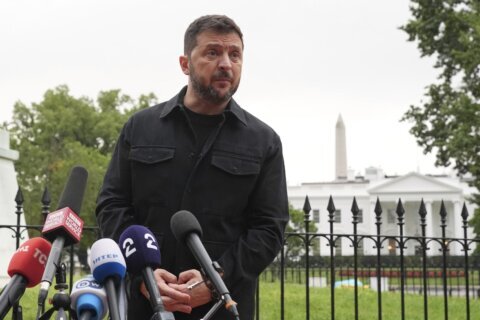MARRAKESH, MOROCCO — In 2006 the U.S. congress was warned that the day would come when terror organizations and trafficking groups based in Africa launched dangerous partnerships and dramatically elevate the likelihood of attacks on the U.S.
That day has arrived.
Anecdotal proof was presented to a broad array of international security, intelligence, military and diplomatic officials gathered in Morocco this week.
“We are now seeing criminal entities and terrorist groups making new alliances that are unbounded by ideology and enabled by shared logistical, financial and communications networks which makes them very difficult to counter,” Rear Admiral Kevin J. Kovacich, Director of Strategy, Plans and Programs at the U.S. Africa Command. told more than 300 attendees at the Marrakesh Security Forum.
Kovacich suggested that modern jihadist and criminal organizations on the continent have learned to operate sophisticated enterprises that tap into complex socio-economic short-comings to reach their goals.
“Extremist groups have grown by partnering with like-minded groups and leveraging theology to foment discord along historical, ethnic, clan and tribal lines. Using violence and fear they divide people to create an us versus them mentality,” he said.
His statements confirm what Michael Braun, a former Drug Enforcement Administration (DEA) official, who briefed Congress in 2006, and again in 2012, predicted.
Braun, currently managing partner in the SGI global security firm, warned that smuggling operations would one day provide the backbone of terrorist activities aimed at the U.S.
Braun’s warning played out recently in Paris, exposing the Islamic State’s pipeline into the Middle East and North Africa. In particular, with Hayat Boumeddine, the girlfriend of Amedy Caulibaly – the gunman who was shot dead by police after killing four hostages during the siege at a Jewish grocery shop. International security officials have found evidence, some of it on video, of her being spirited out of Paris into Turkey via a smuggling ring. Several unconfirmed reports indicate she paid handsomely for the service, which eventually helped her cross the border into Syria.
A source, who collects intelligence on ISIL and it’s movements, said the smugglers, known as fixers, often charge different prices for people interested in crossing the Turkish border into Syria, depending on the client’s willingness to act as couriers.
People seeking such services are often given discounts if they are willing to carry weapons to the organization.
WTOP spoke with a half dozen African-based diplomats and intelligence officials who represent western countries about the issue at the forum. There was a common thread –the increasing number of arrests of individuals returning from terrorist activity with the Islamic State of Iraq and the Levant (ISIL).
One western official, who spoke on the condition of anonymity, noted a stunning uptick in the amount of activity between the Libyan and Tunisian borders. Smugglers maintain a labyrinth of routes between the two countries to facilitate the transport of goods sold on the black market. The official said a growing number of extremists are taking advantage of the routes to move people and goods beneficial to their organizations.
The trend is not unique to Africa. Several officials at the conference claim to have seen evidence of the practice in Europe. Relationships between violent extremists and smugglers are not a new phenomenon, but they were few and far between in previous years.
“If you are a terrorist group, your incentive is to stay under the radar and protect your attack plans; and if you’re a criminal organization, the last thing you want is a government security organization breathing down your neck,” said Alexander Evans, Coordinator of the United Nations Al Qaida/Taliban Monitoring team.
But financial opportunities and new communications tools have provided enough incentive for a growing number of terrorists and criminals to ignore the risks of working together.
According to Evans, whose organization has produced several reports on extremist activity in recent months, the practice differs from region to region based on the routing and skills the smuggling networks employ, and the needs of the terrorist group seeking to partner with them.
Among the starkest representations of the problem that lies ahead was a map presented by an intelligence official in a private session. The map depicted ISIL’s alleged caliphate, which stretches from India’s border with China to the West African coastline. What the map doesn’t show are the associated trading routes, hideouts and institutional knowledge dedicated to the clandestine movement of goods and people that have existed for centuries.








